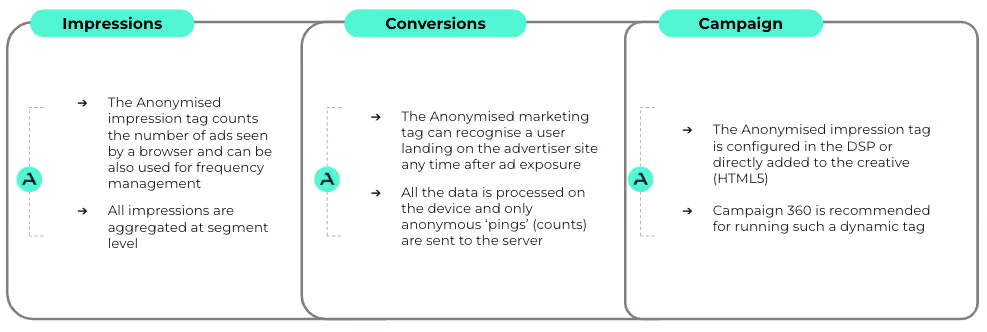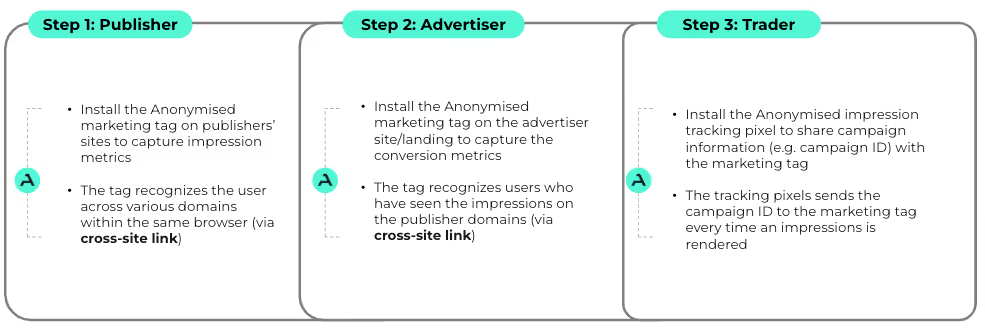Since the announcement of the demise of third-party cookies (TPC), the support for enabling attribution has also been waning. With Google removing floodlight tags in favour of Google Tag Manager and other vendors looking to only use first-party data, the ability to serve advertisers with a core marketing capability is becoming strained.
The loss of attribution brings significant challenges to digital marketing:
Resource Allocation: Attribution helps allocate marketing budgets effectively by identifying high-impact touchpoints. This ensures that all marketing resources are used efficiently.
Personalisation: Insights from attribution allow marketers to tailor messages to individual consumers. Personalised campaigns lead to better engagement and conversion rates.
Improved ROI: Effective attribution strategies result in better return on investment (ROI) for marketing efforts, as marketers can focus on what works best.
Data-Driven Decisioning: Attribution provides data-driven insights, enabling informed decisions such as channel optimisation and campaign adjustments.
Customer Behavior: Attribution helps marketers understand the customer journey, allowing them to optimise all touchpoints and enhance the overall customer experience.
Our entire solution is based on an optimised marketing tag. This on-page code enables Anonymised to listen to and manage consent, deterministically recognise the same browser cross-domain, process the clickstream data on the device, assign interest scores, and allocate every browser to the many real-time audience segments that match their interests, intents and behaviours.
To enable attribution our solution has three core components:
Configuration: the advertiser enables (a) the Anonymised Impression tag within their Campaign Manager, Demand Side Platform or, where possible, with their HTML5 ad content; (b) the Anonymised Marketing Tag within their landing page.
Impressions: the Anonymised Impression tag deterministically detects what relevant ads are seen by a browser (which also allows it to be used for frequency capping).
Conversions: the Anonymised Marketing tag ingests campaign data such as the landing page referral and the campaign parameters, e.g. UTM codes.
See Figure 1 for an understanding of the data capture process:

By capturing the impression data, and the subsequent landing page data and attributing it, at the cohort level, to a user, we can determine the post-impression view that is now missing with TPC deprecation. Our tag continues to observe the user's actions on the advertiser's domain and once the conversion event is recorded the full attribution path for the user becomes available, with the final deliverable being an output of the aggregated attribution paths for the campaign.

Although Anonymised Attribution is tag-enabled it does not use an identifier to determine the browser. Instead, it uses by design, multiple k-anonymity features to ensure that a single browser user cannot be identified nor can any identifier or compound data be inserted into the bidstream.
As Anonymised is cohort-based so is the Attribution solution. At the campaign level, Anonymised can determine that x number of participants undertook similar actions during the campaign lifetime, resulting in comprehensive but aggregated attribution path data.
The attribution data can be presented for Multi-Touch Attribution (MTA) or Marketing Mix Modelling (MMM) depending on the reporting requirements. Remember, in all cases, the data is at cohort level and so is aggregated and no browser-identifying data will be available.
Typically we can export the aggregated Attribution paths, as shown in Figure 2 above or model the data as required, see a linear attribution model example in Figure 3 below:

Export formats can be determined on request however, JSON or CSV will be typically used for the data transfer. Other big data set formats (Avro and Paquet) may also be considered for longer-term collaborations.
Deployment of the Anonymised impression script and marketing tag is straightforward as shown in Figure 4:

Anonymised Attribution set-up:
1. Install and configure the Anonymised marketing tag on the Publisher’s sites.
2. Install and configure the Anonymised marketing tag on the Advertiser's site.
3. Install and configure the Anonymised impression tracking pixel in the demand side platform [vendor permitting].
Set the conversion criteria and Anonymised Attribution is ready to run for the duration of your advertising campaign.
You're over third-party cookie deprecation and what may be. We hear you, so are we.
Power your campaign insights now with Anonymised Attribution.
BOOK A DEMO and select Attribution & Measurement under ‘product interest’.

Back to hub